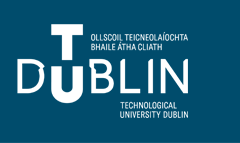please click on thumbnails to download
-

Art in the Data-City: Critical Data Art in the Age of Surveillance Capitalism
Conor McGarrigle
This chapter considers the role of digital art practice, with an emphasis on the Irish context, in what is described as the data-city, that is a theorisation of this contemporary urban condition so infused with opaque data-driven systems that almost every action is described by and enacted through data. The ubiquitous deployment and action of data assemblages – the networks of hardware and software that enable data-capture regimes – in urban space are changing the nature of the city itself in ways that are not readily apparent. Critical data art practices it is suggested, provide a method to highlight and critique these developments.
-

Performing a List … From A to Z and back again
Michael O'Hara, Catherine O'Carroll, Connell Vaughan, and Jeanette Doyle
AC Books is a nonprofit 501(c)(3) art think tank fostering experimentation and critical discussions through events, exhibitions, and publishing.
Images by Jeanette Doyle.
-

Athraitheach: Who Do You Think You Are?
Declan Behan and Clare Bell
Athraitheach: Who do you think you are?
Athraitheach: changeable; changing; fluctuating; shifting; varying.[1]
Conceptually informed by, and materially embedded in, the latest technological developments and innovation in typeface design, this project, ‘Athraitheach: Who do you think you are?’, takes the form of a ‘variable font’[2] that, via the visual representation of language, aims to capture and engage with current public discourses around linguistic diversity and national, cultural and social identities active in the jurisdiction of Northern Ireland.
It also aims to demonstrate how language and identity can, within particular contexts, become inextricably bound together, often being absorbed into, or constitutive of, the process of community and identity construction[3]. By focusing, in this instance, on ‘Irish’ and ‘British’[4] cultural, social and political identities as mediated through the material aspects of language via typography and lettering[5], the project hopes to initiate a discussion on the identities (and shades of therein) that may be revealed or activated by a less fixed, or fluid, approach to the substantiation and representation of these languages and identities.
Selected for inclusion in the Build Peace 2018 Exhibition, Ulster University Art Gallery, October 29–31 2018
Exhibit: Typeface design, interactive website, booklet and poster
Web developer + designer: Simon Sweeney
[1] De Bhaildraitha, T (1959), https://www.teanglann.ie/ga/eid/athraitheach
[2] https://blog.typekit.com/2016/09/14/variable-fonts-a-new-kind-of-font-for-flexible-design/
[3] Ó Huallacháin, C Fr., O. F. M. (1994), ‘The Irish and Irish – a sociolinguistic analysis of the relationship between a people and their language’ Dublin: Assisi Press, p58
[4] The authors acknowledge the presence of Ulster Scots and the languages of various ethnic communities within this context and would hope to address this in a future iteration of the project. For this iteration we have focussed on the specific languages under discussion (Irish and English) in Economic, Social and Cultural Issues of The Northern Ireland Peace Agreement, 3: ‘All participants recognise the importance of respect, understanding and tolerance in relation to linguistic diversity, including in Northern Ireland, the Irish language, Ulster-Scots and the languages of the various ethnic communities, all of which are part of the cultural wealth of the island of Ireland’. Department of the Taoiseach, Government of Ireland, The Northern Ireland Peace Agreement, The Agreement reached in the multi-party negotiations 10 April 1998, p20.
[5] https://www.atypi.org/events/istype2013mono-talk-divided-by-a-common-typeface

